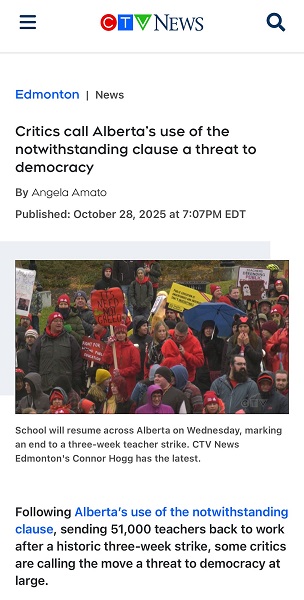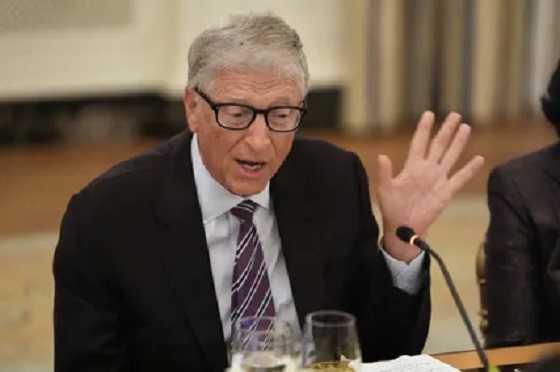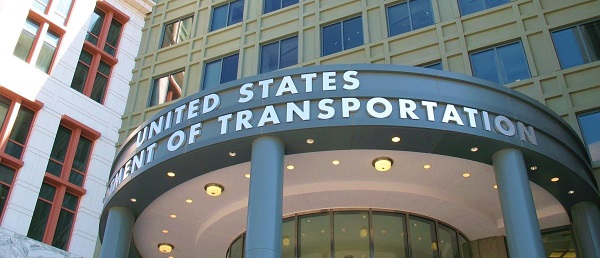Alberta
Defending Provincial Priorities

News release from Free Alberta Strategy
The recent debate around zoning across the province is a prime example of federal encroachment.
The federal government offered money to cities to help with housing affordability challenges, but only made the money available if cities promised to change zoning policies.
As you are aware, The Free Alberta Strategy was built on the concept that the federal government needs to keep out of provincial jurisdiction.
For years, Ottawa has been watering down the constitutional delineation of duties between the federal government and the provincial government.
Bill 18 – the Provincial Priorities Act – is anticipated to pass in the Alberta Legislature this week, and represents a huge step in the direction of greater provincial jurisdictional autonomy.
The Provincial Priorities Act has been dubbed the “Keep Out of Our Backyard” law by Alberta Premier Danielle Smith.
Under the Provincial Priorities Act, any agreements between the federal government and any provincial entities – including municipalities – must receive provincial approval to be considered valid.
Agreements between the federal government and provincial entities lacking Alberta’s endorsement will be deemed illegal under this legislation.
When the legislation was announced, Smith was not mincing words:
“It is not unreasonable for Alberta to demand fairness from Ottawa. They have shown time and again that they will put ideology before practicality, which hurts Alberta families and our economy. We are not going to apologize for continuing to stand up for Albertans so we get the best deal possible.
“Since Ottawa refuses to acknowledge the negative impacts of its overreach, even after losing battles at the Federal and Supreme Courts, we are putting in additional measures to protect our provincial jurisdiction to ensure our province receives our fair share of federal tax dollars and that those dollars are spent on the priorities of Albertans.”
Although the federal government has limited direct authority in provincial jurisdiction, it can leverage its substantial financial resources to prompt or pressure provincial governments into specific actions.
The recent debate around zoning across the province is a prime example of federal encroachment.
The federal government offered money to cities to help with housing affordability challenges, but only made the money available if cities promised to change zoning policies.
Calgary Mayor Jyoti Gondek tried to claim that the federal housing funds were not contingent on the city’s rezoning efforts, but federal Housing Minister Sean Fraser posted a pretty strong response on social media platform X (formerly Twitter):
“If Calgary, or any other city, does not meet the conditions they have agreed to, we will withhold funding under the agreement.”
The federal government played the same trick in many other provinces, too.
But, notably, in Quebec, the federal government just gave the Quebec government the cash and let them distribute it to their municipalities without conditions.
It’s tempting to think this is just more federal bias towards Quebec.
But, actually, this is a great example of how pushing back can have results.
You see, the Provincial Priorities Act in Alberta is modeled after existing legislation in Quebec, known as “An Act Respecting the Ministère du Conseil exécutif,” which prohibits any municipal body from negotiating or entering into agreements with the federal government or its agencies without explicit authorization from the Quebec government.
If Ottawa wants to meddle in Quebec’s jurisdiction, it must first seek Quebec’s approval.
And it works – the federal government got back in line.
Now, with the Provincial Priorities Act, if Ottawa wants to meddle in Alberta’s jurisdiction, it must first seek Alberta’s approval.
It’s time for Ottawa to recognize Alberta’s autonomy and respect our right to determine our own future.
At the Free Alberta Strategy, we understand that constant vigilance is necessary – every time we establish a boundary, the federal government tries to circumvent it.
We will continue to inform you about what’s happening in Alberta and fight to keep Ottawa out.
But we need your support.
With your help, we can continue our work to defend Alberta’s sovereignty and serve the best interests of all Albertans.
Enough is enough – we will not stand by while our interests are disregarded.
If you are in a financial position to contribute to our work, please donate!
Alberta
Province orders School Boards to gather data on class sizes and complexity by Nov 24

Better data, better outcomes for Alberta students |
To help schools address classroom complexity, Alberta’s government will begin collecting annual data on class size and composition.
Over the past three years, Alberta has welcomed more than 80,000 new students. With this unprecedented growth, classroom complexity and class sizes are among the biggest issues facing schools and teachers across the province.
To meet this challenge head on, Alberta’s government will work with school boards to gather yearly data on class sizes and composition. This information will be used to better understand staffing, student needs and classroom complexity. School boards will be required to submit data on Alberta classrooms by Nov. 24, and by January, this data will be made publicly available and will then be released annually.
Data collected on classroom complexity will help the province understand and address issues in schools, including class sizes, and support strategic investments in classrooms. Over the next three years, school boards will be provided with funding to hire 3,000 teachers and 1,500 new education assistants to support students with complex needs.
“We are ready to work with school boards and teachers to address classroom complexity and class sizes. We have heard them loud and clear and we are taking bold action to address these issues.”
Alberta’s government is establishing a Class Size and Complexity Task Force to begin work immediately on identifying solutions to the challenges facing Alberta classrooms. Alongside new annual data collection, the task force will ensure every student gets the attention and support they need to succeed. Details about the task force will be shared in the coming weeks.
“This data will provide essential insight into classroom realities, guiding evidence-based decisions and advocating for sustainable funding to address complexity, ensuring every student and educator in Alberta has the support to thrive.”
Quick facts
To inform decisions on addressing classroom complexity, data will be collected on total numbers of:
- all staff, per school, including roles
- substitute teachers
- district staff, listed by job title
- students, per classroom, per school
- severe, mild/moderate, and gifted/talented students, per classroom, per school
- English as an additional language (EAL) students, per classroom, per school
- refugee students, per classroom, per school
- First Nations, Métis and Inuit students, per classroom, per school
- Individualized Program Plans, per classroom, per school
- students waitlisted for assessment, per classroom, per school
- incidents of aggression and violence
- $55 million was provided in Budget 2025 to address classroom complexity.
- 8.6 billion is being invested to build and renovate more than 130 schools across the province.
- Budget 2025 is investing $1.6 billion in learning support funding to help meet students’ specialized learning needs.
- Budget 2025 is investing $1.1 billion to hire more than 4,000 teachers and educational staff.
Alberta
How one major media torqued its coverage – in the take no prisoners words of a former Alberta premier

(Editor’s note: I was going to write on the media’s handling of the Alberta government’s decision to order striking teachers back to work and invoke Section 33 of the Charter in doing so. But former Alberta premier Jason Kenney provided such a fulsome dissection of an absence of balance and its consequences in terms of public trust on X that I asked him if The Rewrite could publish it. He said yes and here it is – Peter Menzies.)
By Jason Kenney
This ”story” is an object lesson for why trust in legacy media has plummeted, and alt right media audiences have grown.
”story” is an object lesson for why trust in legacy media has plummeted, and alt right media audiences have grown.
Here CTV “digital news producer” @AngeMAmato (she/her) writes a story about “experts” calling the use of Sec. 33 “a threat to democracy.”
Who are the experts?
A left wing academic, and a left wing activist. The latter, Howard Sapers, is a former Liberal MLA (which the article does not mention) for a party that is so marginal, it has not elected an MLA in over a decade.
For good measure CTV goes on to quote two left wing union bosses, who of course are predictably outraged.
A more accurate headline would be “Four people on the left angry about use of Notwithstanding Clause.” Which is the opposite of news. It’s the ultimate “Dog Bites Man” non-story.
Did the CTV producer make any effort to post a balanced story by asking for comment from academics / lawyers / think tanks who support use of Sec. 33? Did she call the @CDNConstFound or the @MLInstitute’s Judicial Power Project? Did she attempt to reach any of these four scholars, who just published their views in a @nationalpost op-ed last week?
Did she have an editor who asked why her story lacked any attempt at balance?
And did anyone at CTV pause for a moment to ponder how tendentious it is to accuse a democratically elected legislature of acting “undemocratically” by invoking a power whose entire purpose is to ensure democratic accountability?
She provides some historical context about prior use of Sec. 33. Why does that context not include the fact that most democratically elected provincial governments (including Alberta under Premier Lougheed, and Saskatchewan under NDP Premier Blakeney) agreed to adopt the Charter *only if* it included the Notwithstanding Clause to allow democratically elected Legislatures to ensure a democratic check and balance against the abuse of undemocratic, unaccountable judicial power?
Why does she not mention that for the first 33 years of the Charter era, the Canadian Courts ruled that there was no constitutionally protected right to strike?
Why doesn’t she quote an expert pointing out that Allan Blakeney defended the Saskatchewan Legislature’s 1986 use of Sec. 33 to end a strike as “a legitimate use of the Clause?” Or refer to Peter Lougheed’s 1987 commitment to use Sec. 33 if the courts invented a right to strike?
Many thoughtful criticisms can be levelled against Section 33. Being undemocratic is not one of them.
So why do we see so much agitprop like this masquerading as news from so many legacy media outlets?
IMO, there are two possible answers:
1) They are blind to their own biases; and / or
2) People like @AngeMAmato believe that they have a moral imperative to be “progressive journalists” which trumps the boringly old fashioned professional imperative to be objective and balanced.
Whatever the reason, “journalists” like this have no one to blame but themselves for growing distrust of legacy media, and the consequent emergence of non traditional media platforms.
 |
|
Invite your friends and earn rewards
-

 Business2 days ago
Business2 days agoBill Gates walks away from the climate cult
-

 Internet2 days ago
Internet2 days agoMusk launches Grokipedia to break Wikipedia’s information monopoly
-

 Alberta1 day ago
Alberta1 day agoNobel Prize nods to Alberta innovation in carbon capture
-

 Business15 hours ago
Business15 hours agoCanada’s attack on religious charities makes no fiscal sense
-

 International4 hours ago
International4 hours agoPrince Andrew banished from the British monarchy
-

 Business1 day ago
Business1 day agoFord’s Liquor War Trades Economic Freedom For Political Theatre
-

 Business3 hours ago
Business3 hours ago“We have a deal”: Trump, Xi strike breakthrough on trade and fentanyl
-

 Banks1 day ago
Banks1 day agoBank of Canada Cuts Rates to 2.25%, Warns of Structural Economic Damage










